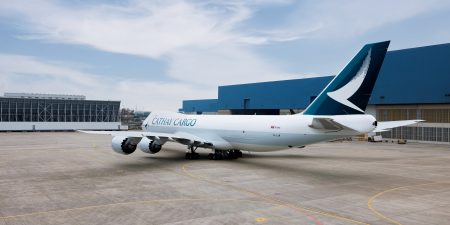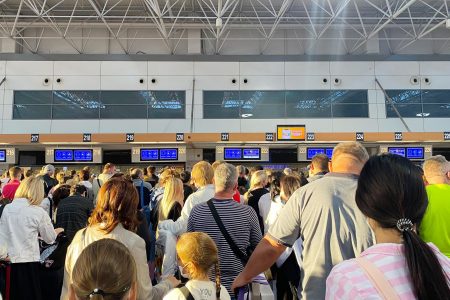Recent weeks have been frustrating for passengers in Europe and the US. Finally free to travel again, their pent-up demand has led to long lines at airports, lengthy delays and cancellations that turned connecting flight itineraries into obstacle courses. But what are the ramifications for air cargo, and how is the industry responding where there has been an impact?
Airlines have scrapped thousands of passenger flights this summer. Lufthansa has announced 900 flight cuts for July at its hubs at Frankfurt and Munich. Other carriers, like American Airlines and United, reduced their schedules months ago. Between two and four per cent of flights in the UK were cancelled in early June, while other European countries saw cancellation rates of around three per cent over the same period while the Netherlands suffered a bigger drop of 11 per cent.
Airport limits
In the face of these disruptions, some airports, including London Heathrow and Gatwick, have felt compelled to impose caps on flying. Amsterdam Schiphol, one of the hardest-hit hubs, announced a ceiling on flights during the summer peak that will see a 16 per cent reduction overall.
Robert Fordree, Vice-president Cargo at handler Menzies Aviation, says Europe has been the most affected region for these current disruptions. However, Steve Saxon, a Partner at McKinsey & Company who heads the consultancy’s aviation and logistics work in Asia, says airports around the globe – from Australia and India to Canada – have been also been impacted.
‘It’s a struggle everywhere. Every airline and airport is struggling to get capacity back in the air,’ he says, noting that even Singapore Changi has wrestled with extended delays.
After the furlough
They are all facing the same problem. Unlike in Hong Kong where quarantine restrictions remain (see below), passenger demand has rocketed back much faster than the operational capability of many airports and airlines, which has been severely depleted by the pandemic. Carriers, handlers and airports were forced to lay off large numbers of employees. Ramping up staff numbers again has proven to be challenging, while many laid-off workers have found employment elsewhere.
Moreover, the lengthy security clearance process for staff in airside positions deters possible candidates and slows down operators’ efforts to boost numbers to keep up with demand.
The good news for air-cargo so far is that handlers have not reported any significant impact to operations from the recent disruptions, although some in the industry point to the current higher airfreight rates being a factor of not just demand, but some handling bottlenecks too.
‘We see very stable operations,’ states a spokesman for Swissport. ‘There are some local issues here and there across the globe, but nothing that leads to very substantial issues.’
Minimal cargo impact
Unlike on the passenger side of the aviation industry, companies handling cargo did not lay off large numbers of employees who work with cargo during the pandemic, and demand has remained strong over the past couple of years, as McKinsey’s Saxon points out. Although he adds: ‘There has been a small knock-on effect from the fact that many handlers use the same labour to load cargo and passenger bags.’
The second major reason why cargo seems to be escaping the travails of the passenger side is that cancellations have overwhelmingly affected narrow-body flights on shorter sectors. With a few exceptions, European and American airlines have maintained their long-haul operations, so the impact of the flight cuts has been limited to some parcel traffic and a small scope of feeder operations.
‘The many flight cancellations being reported are largely short-haul, holiday flights that traditionally do not carry cargo or only in a very limited capacity,’ says Menzies’ Fordree. ‘They are generally narrow-body aircraft, so cargo payload is limited and impact on our global cargo operations is, therefore, minimal.’
Capacity fluctuations
Even so, cargo operations are under some strain. Saxon notes that operators are contending with a convergence of disruptions, in which the current flight cancellations are but the latest hiccup. The war in Ukraine reduced Russian freighter capacity on the Asia-Europe sector and has forced European carriers to take longer routings to avoid Russian airspace, effectively reducing payload. In addition, demand for airfreight has increased because shippers have been reluctant to use rail services from the Chinese Mainland to Europe via Russia, while the lockdowns in the Chinese Mainland decimated capacity and created a backlog of orders to be shipped.



